Air Quality in Built Environment
Today, we are delighted to welcome the 51th Earth Day with whose theme this year is Climate Action. On this very special day, we propose stakeholders to participant in a global air quality monitoring campaign-Plant a Sensor.
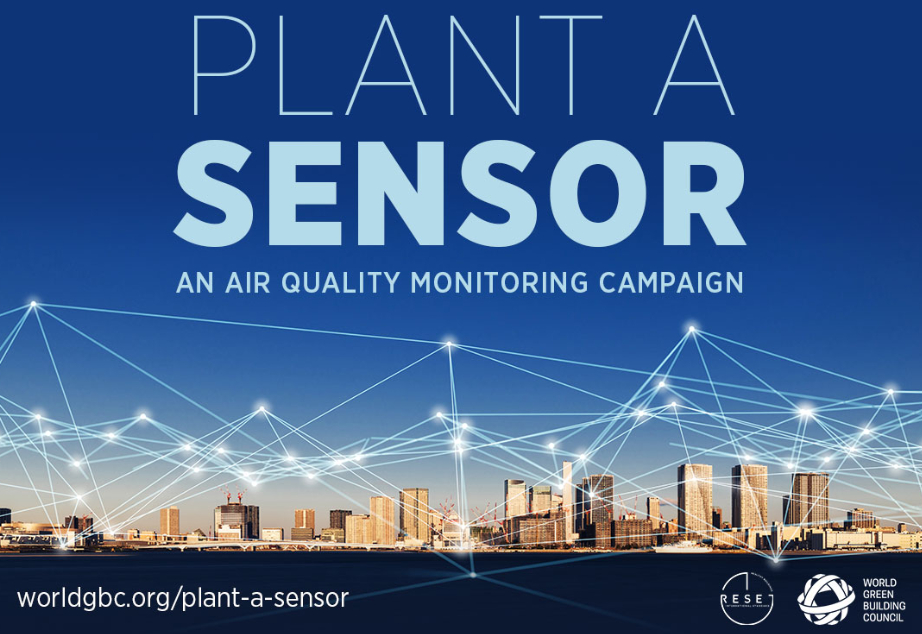
This campaign, with Tongdy Sensing taking part in to supply monitors and data service, is led by the World Green Building Council (WGBC) and RESET, in collaboration with Earth Day Network and others to mount air quality monitors in the built environment around the world.
The data gathered will be publicly available on the RESET Earth platform and monitors, under certain conditions, can be maintained through our MyTongdy platform. Data will also be contributed to the Earth Challenge 2020 citizen science campaign, run in celebration of the 51th anniversary of Earth Day this year.
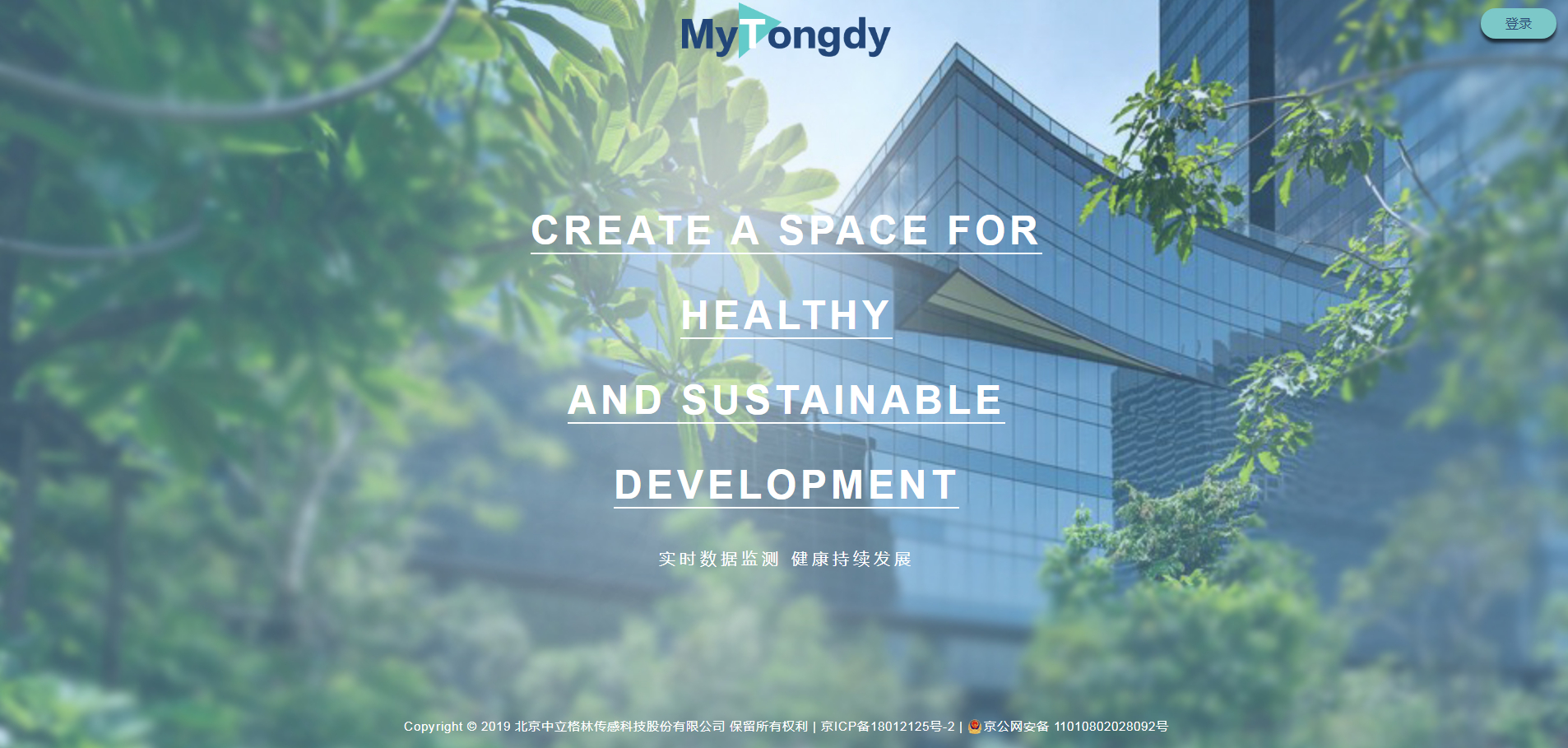
Currently, our indoor and outdoor air quality monitors have been sending to a number of countries and started monitoring air quality in the local built environment in real time.
So how’s it matter when we keep up to monitor air quality in built environment? Does air quality in built environment have something to do with our climate change? We are willing to offer some perspectives to understand this better.
Our Specific Goals
Reduce ambient outdoor emissions: to reduce operational emissions from the global building sector, limiting the sector’s contribution to climate change; to lower embodied emissions of greenhouse gases from the full life cycle of a building, including material transport, demolition and waste across the supply chain.
Mitigate sources of indoor air pollution: to promote sustainable, low emissions and air-purifying building materials to limit pollutants; to prioritise building fabric and construction quality to lower risk of damp and mould and utilize appropriate strategies to achieve energy efficiency and health priorities.
Radically improve sustainable operation of buildings: to prevent the emissions multiplier effect and endorse sustainable design, operation and retrofit of buildings to protect users; present solutions to health and environmental threats of indoor air pollution.
Increase global awareness: to develop recognition of the impact of the built environment on global air pollution; promote calls to action for a range of stakeholders, including citizens, businesses and policy makers.
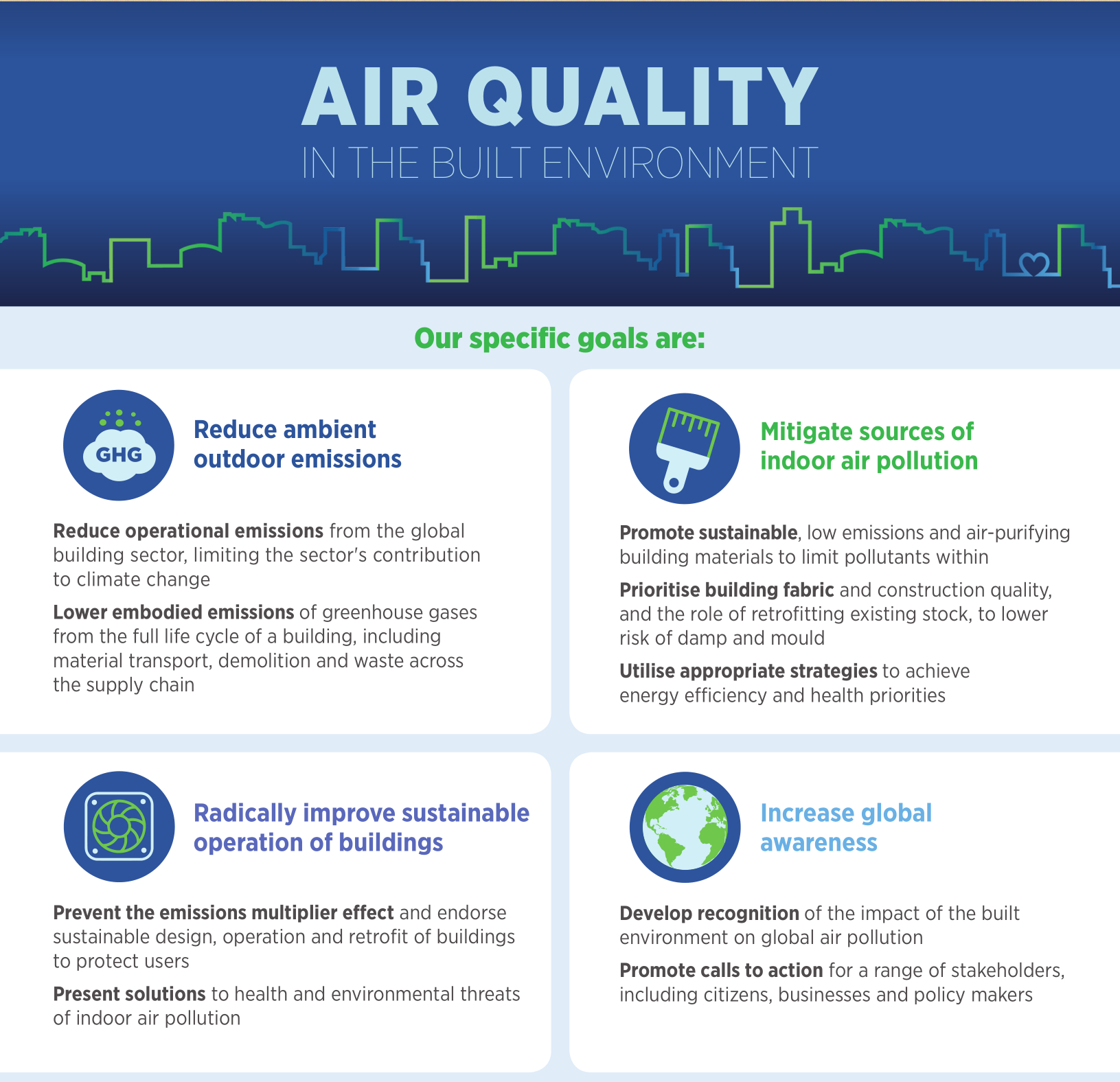
Air Pollutants Sources in Built Environment And Solutions
Ambient sources:
Energy: 39%of global energy-related carbon emissions are attributed to buildings
Materials: most of the 1,500 billion bricks produced annually are using polluting kilns
Construction: concrete production can release silica dust, a known carcinogen
Cooking: traditional cookstoves cause 58% global black carbon emissions
Cooling: HFCs, potent climate forcers, are often found in AC systems
Indoor sources:
Heating: combustion of solid fuels causes indoor as well as outdoor pollution
Damp and mould: caused by air infiltration through cracks in building fabric
Chemicals: VOCs, emitted from certain materials, have adverse health effects
Toxic materials: construction materials, e.g. asbestos, can cause harmful airborne pollution
Outdoor infiltration: most exposure to outdoor air pollution occurs inside buildings.
Solutions:
Did you know? 91% of world’s population, no matter in urban and rural, live in places with air that exceeds WHO guidelines for key pollutants. So how to solve indoor air pollutants, some suggestions listed as below:
- Plant a sensor to monitor indoor air quality
- Clean cooling and heating
- Clean construction
- Healthy materials
- Clean and efficient energy use
- Building retrofit
- Building management and ventilation
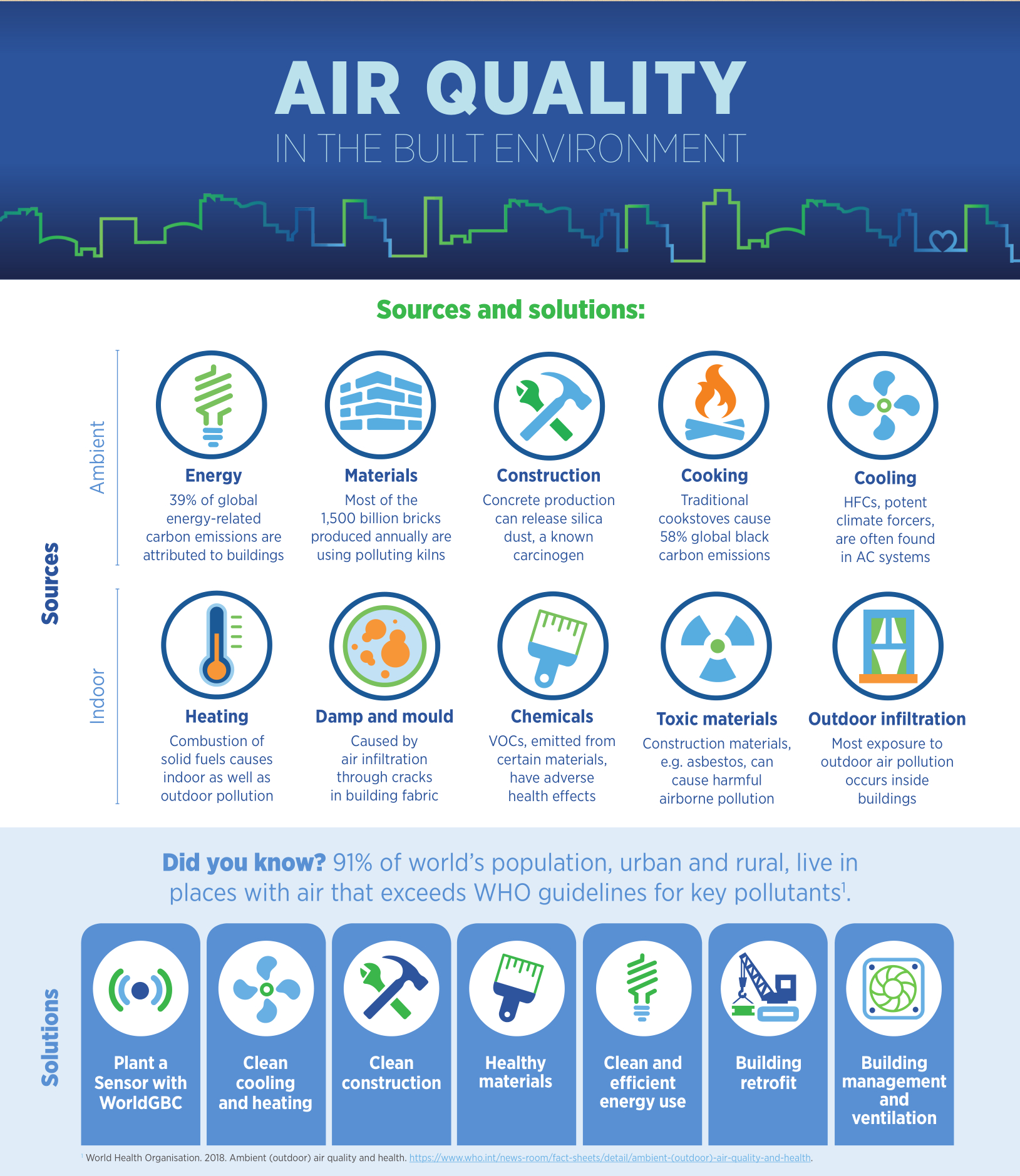
Polluted Air Caused Problems
For people:
Air pollution is largest environmental killer, causing 1 in 9 deaths worldwide. Approximately 8 million deaths annually attributed to air pollution, predominantly in developing countries.
Airborne particles of dust from construction cause severe health impacts, including silicosis, asthma and heart disease. Poor indoor air quality in understood to reduce cognitive functioning, productivity and wellbeing.
For planet:
Carbon dioxide and other greenhouse gases responsible for the greenhouse effect, short lived climate pollutants are responsible for 45% of current global warming.
Close to 40% of global energy-related carbon emissions being released from buildings. Airborne course and fine particulate matter (PM10) can directly alter the global balance of incoming solar radiation, distort the albedo effect and react with other pollutants.
A global supply chain, including excavation, brick-making, transportation and demolition can build in embodied emissions to a building. Building materials and construction practices negatively affect natural habitats.
For buildings:
Where outdoor air is polluted, natural or passive ventilation strategies are often unsuitable due to ingress of polluted air.
Since polluted outdoor air reduces use of natural ventilation strategies, buildings will face increased filtraition demand which causes emissions multiplier effect and thus create further increasing urban heat island effect and cooling demand. With expulsion of hot air, it will create local microclimatic warming impacts and exacerbate the urban heat island effect.
Most of our exposure to outdoor air pollutants occurs when we are inside buildings, due to infiltration through windows, apertures or cracks in the building fabric.
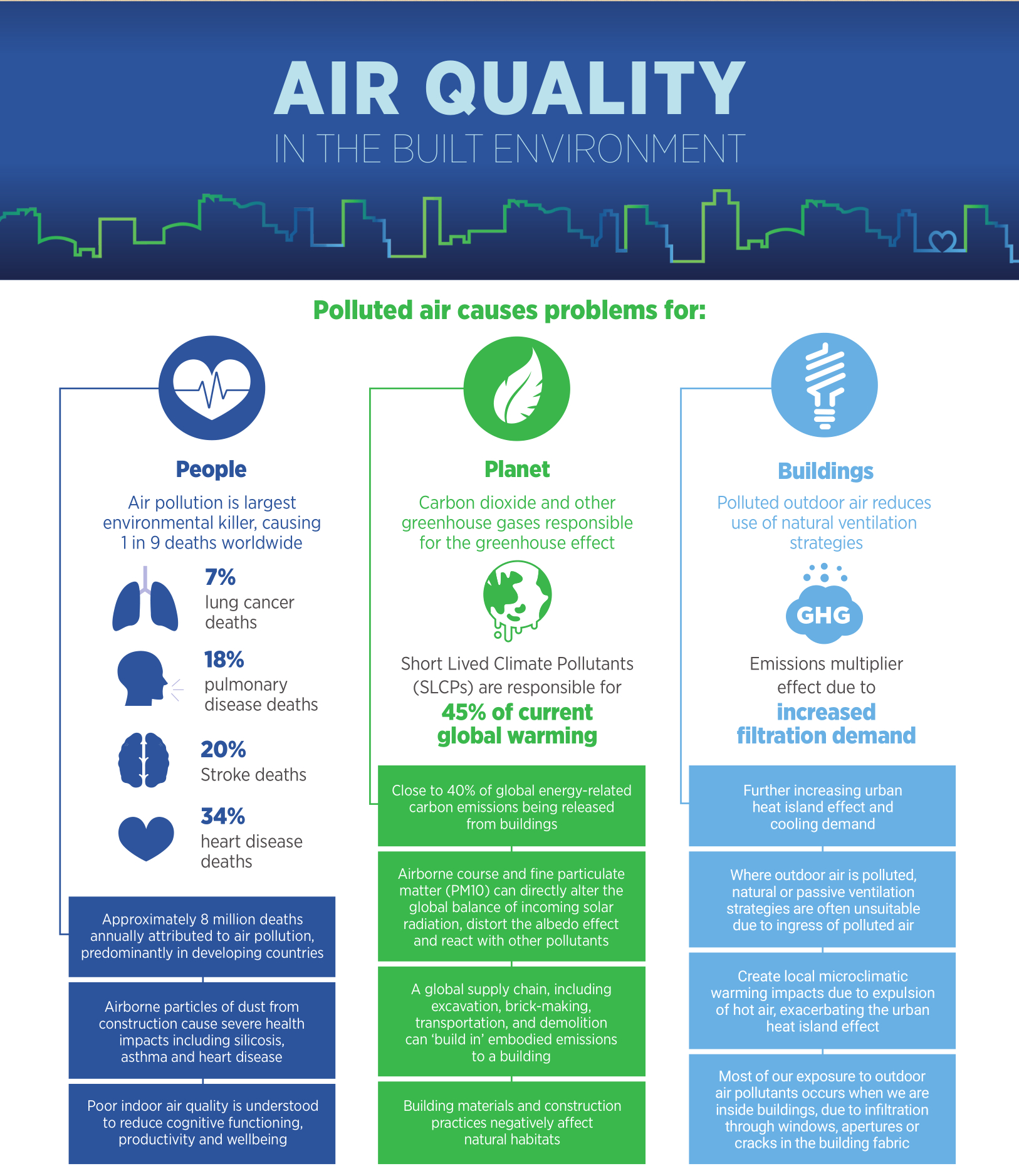
Solutions for Stakeholders
For citizen:
Choose clean energy for power and transportation and improve energy efficiency as far as possible.
Improve home building quality and avoid unhealthy chemicals in furnishings-choose low-VOC options.
Ensure good ventilation strategy for fresh air access.
Consider investing in an indoor air quality monitor,
engage your facilities management team and/or landlord to provide better air quality for tenants and occupiers.
For business:
choose clean energy for power and transportation and improve energy efficiency as far as possible.
Maintain good indoor air quality with healthy materials, ventilation strategy and use real-time monitoring.
Prioritise responsible sourcing for buildings-prioritise local, ethical and recycled materials with no (or low) VOC concentrations.
Support sustainable finance initiatives for green buildings, particularly microfinancing schemes in developing nations.
For government:
Invest in clean energy, decarbonization of national grid and support decentralized renewable energy networks in rural locations.
Promote energy efficiency by raising building standards and support retrofit programmes.
Monitor outdoor air quality, publicly disclose data and encourage monitoring in high occupancy areas.
Incentivize safest and most sustainable methods of construction.
Implement national standards for building ventilation and IAQ.
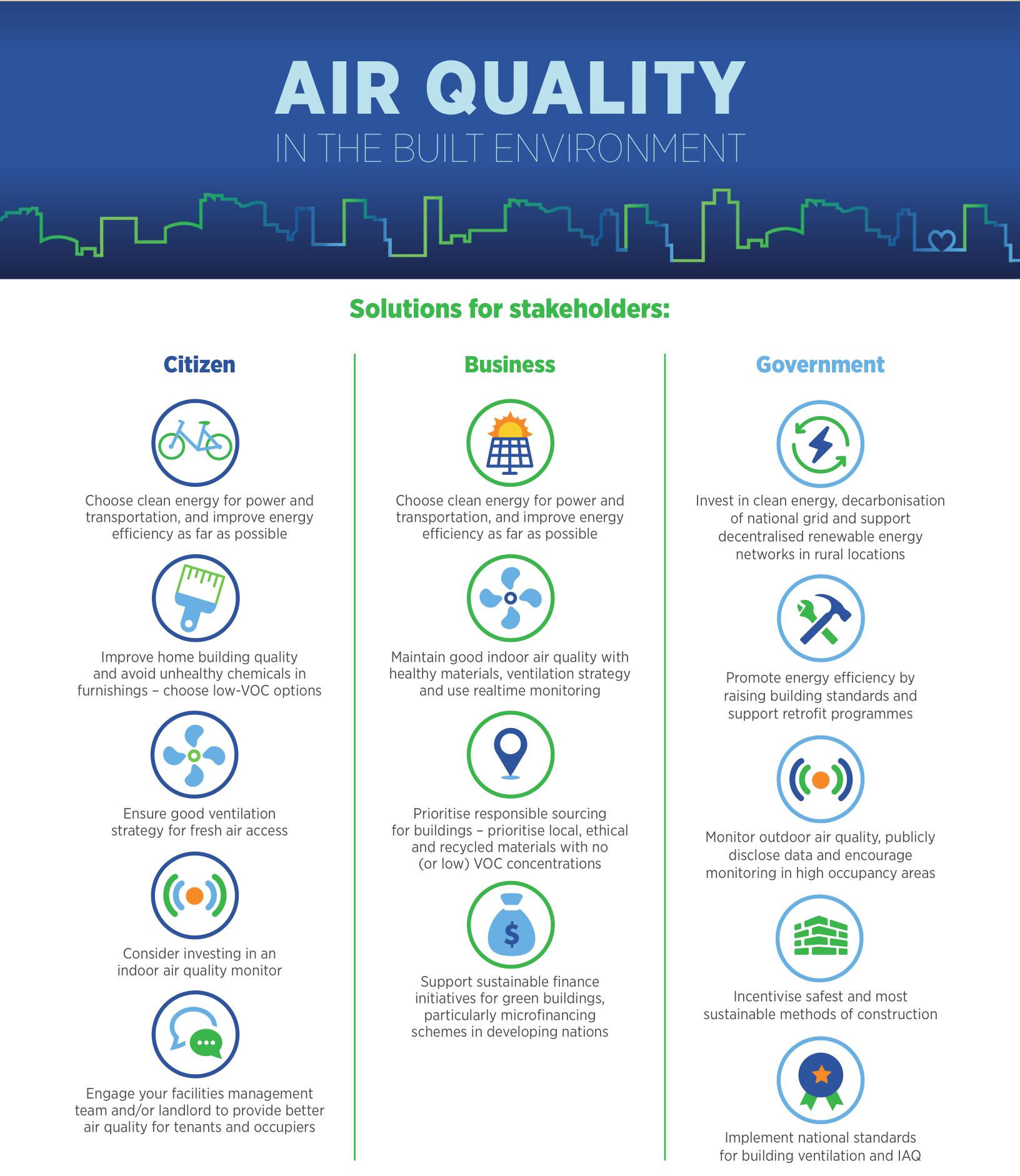
Post time: Apr-22-2020
